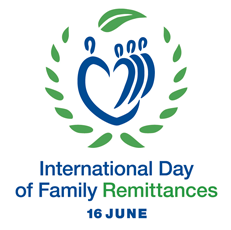Remittances: how long will breather last
Business Recorder / BR Research
By September 2017, remittance hearts were sinking. By January 2018, there has been some respite, a much-needed one. But that’s no reason to get excited just yet. Remittance inflows for the seven months ending January 2018 have grown about 3.5 percent. While this growth is a far cry from the growth seen between 2009 and 2016, it is quite an improvement over the fall of 1.45 percent in 7MFY17, and the tepid growth of 1 percent in the first quarter of FY18. In fact, month-on-month trend in the last three months is also much better than the same periods of FY16.
What’s going wrong? The usual suspects: inflows from Saudi Arabia are down sharply year-on-year whereas growth in inflows from the UAE isn’t too impressive – both for reasons already much discussed in this space in our monthly remittance coverage.
What’s impressive is the growth in remittance from the US and the UK. The former grew about 12 percent in 7MFY18; the latter 24 percent. Channel checks from remittance players maintain that the Pakistan Remittance Initiative (PRI) has been rather active in the UK. PRI’s head had told BR Research in an interview late last year that his department has been active in doing roadshows and facilitating tie-ups or agency arrangements to boost remittance flows from that corridor.
Industry sources say that the PRI has not only been meeting remittance firms in Manchester, London and other cities that boast sizeable Pakistani diaspora, it has also been meeting the UK’s crime agencies, tax departments and so forth. This has given confidence to both the remittance senders as well as the UK government that Pakistan is serious about formalising its remittance inflows.
Moreover, as luck would have it, the British pound has appreciated sharply against the USD in 7MFY18, which too has propped up the dollar value of remittances from the UK. As a result, the share of remittance inflows from the UK now stands at 14 percent compared to 12 percent in FY17.
That does not mean, however, that remittance is out of the woods. For one, the UK is no substitute for the scare gap being left by Saudi Arabia and other GCC. And two, the next big wave of remittance reforms (the first wave being the launch of the PRI itself) ought to have emerged at least two years ago when remittance growth had begun tapering off. It didn’t. Which means it will take time to heal the wounded hand.
There are currently two reasons of hope in the pipeline. First, the launch of mobile banking/branchless banking remittance products. That will not only require aggressive marketing in the sending corridors but also in remittance-heavy districts within Pakistan where the power of BTL activities should not be ruled out.
The second reason of hope (albeit a seemingly forlorn) is the much-delayed launch of CDNS’s Overseas Pakistanis Savings Certificates aimed at attracting remittances. According to media reports, the product has already been developed but the government is just sitting on as if they are eggs waiting to be hatched.


